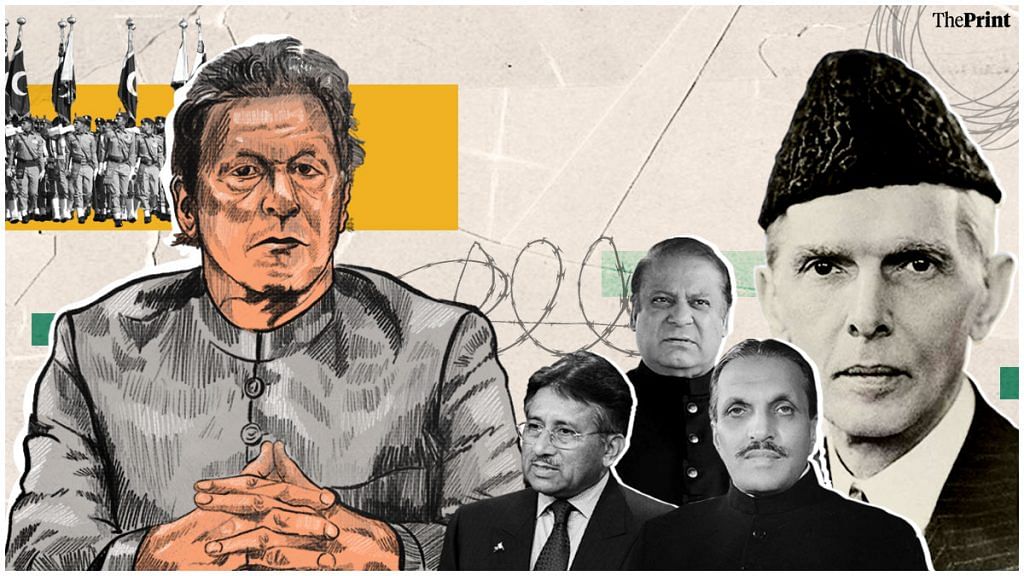New Delhi: “I have lived through many authoritarian regimes, and I have lived through many periods of censorship [in media], and I have always ended up paying the price for speaking up. But what is happening now is unprecedented…,” senior Pakistani journalist and publisher Najam Sethi said in 2019 while reflecting on the “plight of press freedom” in Pakistan.
On 3 May 2022, Reporters Without Borders (RSF) revealed that Pakistan has slipped from 145th to 157th position in the World Press Freedom Index. This blot on the South Asian country’s reputation is a culmination of the crackdown on free press over the years.
On World Press Freedom Day, Dawn underlined how “media’s critical role in holding the powerful to account is being put to the test”. “The Pakistani state has long had a fraught relationship with the media, paying lip service to the notion of press freedom even while doing all it can to bend its practitioners to its will. Decades of overt and covert military interventions and frequently unstable civilian governments have created a landscape where the media, instead of being a watchdog for the public interest, is expected to serve as a conduit for a heavily securitised approach to domestic and regional developments,” an excerpt from the editorial read.
Sethi may have described Pakistan’s press freedom to be “unprecedented” in 2019 — while the country was governed by Imran Khan’s government — but the stifling of media is a poor trend that has been passed on from one government to another. In the last decade or so, draconian media laws and a culture of impunity have only made things worse.
Also Read: Zulfikar Ali Bhutto to Imran Khan — Pakistan’s yearning for a ‘miracle man’ is its downfall
State of press freedom in Pakistan over the years
In 1947, Muhammad Ali Jinnah had said, “I expect you (journalists) to be completely fearless…”. Unfortunately, the leading figures of Pakistan did not grasp the weight of Jinnah’s words. Going by reports of the World Press Freedom Index from previous years, press freedom in the South-Asian country has never been consistent.
According to Professor Syed Abdul Siraj’s research paper on press freedom in Pakistan, all governments boast about press freedom but react “differently” when the press criticises the government. However, Siraj notes, during Musharraf’s military and civil regime, media was “operated in a mixed character”.
Six years after the Pakistan Electronic Media Regulatory Authority (PEMRA) was established, Reporters Without Borders wrote an open letter to the then Prime Minister Yousaf Raza Gillani in 2008. The Pakistan People’s Party (PPP) government had introduced a Bill to repeal autocratic amendments to a broadcast media law — a journalist could be sentenced to three years in prison for defaming or making fun of the president — brought in by President Pervez Musharraf in 2007.
While RSF lauded Gillani government for its step, it also offered a 10-point plan to achieve a “lasting improvement” for press freedom in the country.
Also Read: Imran has damaged the idea of Pakistan. Don’t expect it to turn into a normal country soon
The situation only worsened under Imran Khan
While the state of press freedom in Pakistan has been on a steady decline in the last decade, many experts, including Najam Sethi, believe that the situation worsened under former Prime Minister Imran Khan’s tenure. And among the crackdown measures taken by the State, the PTI government’s proposed ordinance to amend the Prevention of Electronic Crimes Act, 2006 (PECA) is the most prominent one. The ordinances could be used against social media users for posting “fake news” resulting in a jail sentence of five years. Earlier this year in February, President Arif Alvi adopted the ordinance into law.
“It will … inevitably be used to clamp down on dissenters and critics of the government and state institutions” — Pakistan’s Human Rights Commission had said this in response to the “undemocratic” ordinance proposed by the Imran Khan government.
When Imran Khan came to power, he claimed that his government would focus on ensuring freedom of expression for the media. However, behind the scenes, the government and military put pressure on media houses to not report any news that showed the military in a bad light.
From September 2018 to January 2020, Freedom Network reported that a total of seven journalists and a blogger were murdered, six were abducted and 15 were issued legal cases out of 135 violations against media personnel. Pakistan has fallen six places in the Reporters Without Borders World Press Freedom Index during Imran Khan’s tenure.
According to Khaled Ahmed, a consulting editor at Newsweek Pakistan, a journalist can be murdered or kidnapped if some “parties” working as “non-state actors” get offended by the concerned person’s reportage.
From Zia-ul-Haq’s infamous vetting of newspapers to Nawaz Sharif tapping phone conversations of journalists, journalism in Pakistan has been a daunting profession. What’s particularly disturbing is the growing online abuse meted out to women journalists—a trend which has grown in the pandemic.
Many experts, like Pakistani journalist Shahzeb Jillani believe that the Imran Khan government micromanaged news coverage using coercive tactics, something not seen since General Zia-ul-Haq’s military rule. “The media houses feel obligated to surrender to the country’s most powerful institution or risk retribution,” Jillani was quoted as saying by The Diplomat.
(Edited by Zoya Bhatti)
